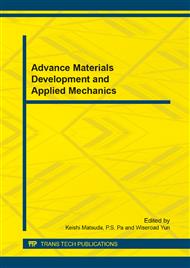p.421
p.425
p.431
p.435
p.439
p.444
p.450
p.454
p.458
Design of Reflective/Diffractive Objective Optical System for Handed Low-Light Night Vision Google
Abstract:
For the design direction of low-light night vision goggle become more and more miniaturization and high image quality [1], this artical design a reflective/diffractive objective optical system with optical software ZEMAX. It combines diffractive elements with reflective elements to design a reflective/diffractive objective with a 14.5° field of view and a 1.0/1.2 relative aperture and a 95mm focal length , and it introduces an improved method based on primary aberration theory in reflective/diffractive hybrid optical system. Etching diffractive optical element on the mirror can be usful for correcting aberration and improving the image quality.
Info:
Periodical:
Pages:
439-443
Citation:
Online since:
July 2014
Authors:
Price:
Сopyright:
© 2014 Trans Tech Publications Ltd. All Rights Reserved
Share:
Citation:


